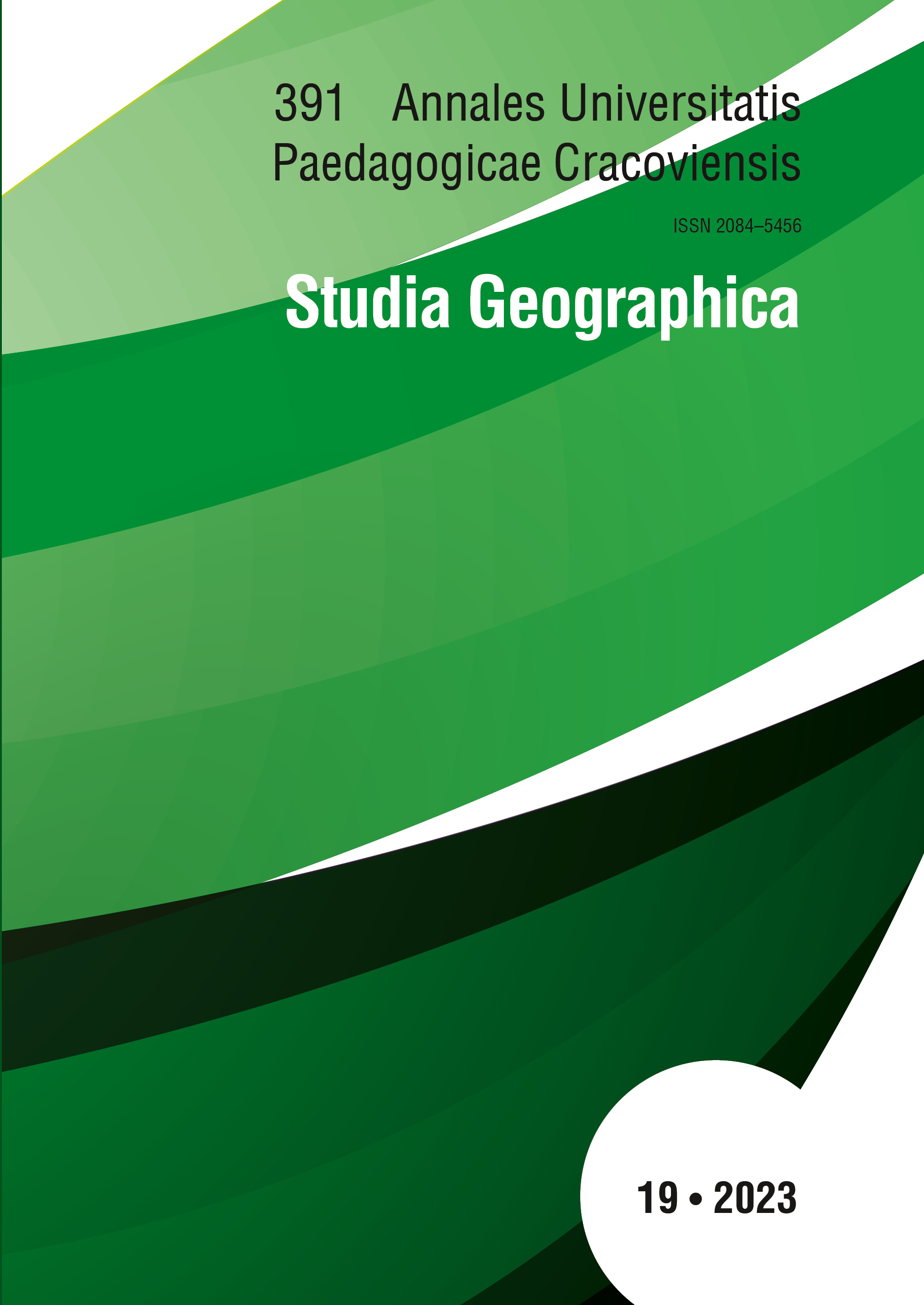Subjective assessment of the tourist attractiveness of the state of Yucatán and the city of Mérida
DOI:
https://doi.org/10.24917/20845456.19.11Keywords:
tourist attraction, Yucatan, Merida, MexicoAbstract
The aim of the study was to examine the tourist attractiveness of the state of Yucatan and its capital Merida, based on a publicly available questionnaire from the 2019 data of the Yucatan Tourism Observatory. It was carried out with the help of available statistical data containing information on the subjective opinions of tourists visiting the state of Yucatán. Particular attention was paid to the city of Merida, which was indicated by most people as the first city they had visited or would visit during their trip. Respondents rated the tourist values, the components of the tourist infrastructure and the tourist sites, and indicated the specific elements they find enjoyable the most in the State of Yucatan. The majority of respondents, of those who had visited the most important tourist sites in the state or used a particular service, rated them positively.
References
Cano, O. (2002). Chichén Itzá, Yucatán. Guía de Viajeros. Arqueología Mexicana, 79–87. https://docplayer.es/6367644-Chichen‑itza‑yucatan‑olga‑cano.html [dostęp: 19.01.2024 r.]
Castillo Pavón O., Méndez‑Ramírez J.J. (2017). Los desarrollos turísticos y sus efectos medioambientales en la Riviera Maya, 1980–2015. Quivera Revista de Estudios Territoriales, Universidad Autónoma del Estado de México, 101 – 118.
Gotowski R., Parzych K. (2016). Tourist attractiveness of Venice in Żnin district. Journal of Education, Health and Sport, 6(10), 714–720. DOI: http://dx.doi.org/10.5281/zenodo.225143
Jędrysiak T. (2008). Turystyka Kulturowa. Warszawa: PWE.
Klemczak, I., Siewak-Sojka, Z., Synowiec, O. (2018). Meksyk. Wydawnictwo Pascal
Kruczek, Z. (2011). Metody oceny atrakcji turystycznych i możliwości ich wykorzystania w tworzeniu regionalnych produktów turystycznych. Prace Naukowe Uniwersytetu Ekonomicznego we Wrocławiu, 157, 768–778.
Kruger, P.S. (2012). Perceptions of Tourism Impacts and Satisfaction with Particular Life Domains. In: Uysal, M., Perdue, R., Sirgy, M. (eds), Handbook of Tourism and Quality‑of‑ Life Research. International Handbooks of Quality of Life. Dordrecht: Springer. https://doi.org/10.1007/978-94-007-2288-0_16
Kurek, W. (2007). Turystyka. Warszawa: PWN.
Mikos v. Rohrscheidt, A. (2008). Turystyka kulturowa – wokół definicji. Turystyka Kulturowa, 9, 4–21.
Neal J., Sirgy M., Uysal M. (1999). The Role of Satisfaction with Leisure Travel/ Tourism Services and Experience in Satisfaction with Leisure Life and Overall Life. Journal of Business Research, 44, 154–163.
Neal J., Sirgy M., Uysal M. (2007). The Effect of Tourism Services on Travelers’ Quality of Life. Journal of Travel Research, 46, 154–163, DOI: 10.1177/0047287507303977
Observatorio Turístico de Yucatán, https://www.observaturyucatan.org.mx/publicaciones
Pabian, B. (2006). Atrakcje turystyczne Polski. Walory kulturowe. Częstochowa: Wyższa Szkoła Hotelarstwa i Turystyki.
Olko, J. (2010). Meksyk przed konkwistą. Warszawa: Państwowy Instytut Wydawniczy.
Olko, J., Źrałka, J. (2008). W krainie czerni i czerwieni. Kultury prekolumbijskiej Mezoameryki. Warszawa: Wydawnictwa Uniwersytetu Warszawskiego.
Pytel-Skiba, E., Skiba, P. (2017). Meksyk. Jukatan i Chiapas. Gliwice: Wydawnictwo Helion.
Rivero Canto, R.E. (2014). Historia, arte y sociedad en México. ASRI: Arte y sociedad. Revista de investigación, 7, 1–13.
Rogalewski, O. (1979). Zagospodarowanie turystyczne. Warszawa: WSiP.
Stasiak A. (2022). Turystyka a jakość życia. W: P. Różycki (red.), Turystyka społeczna a jakość życia. Kraków: Oficyna Wydawnicza „Wierchy”, 15–42.
Szot, Z. (1981). Meksyk. Warszawa: Państwowe Wydawnictwo Naukowe.
Winiarczyk‑Raźniak A. (2011). Majowie w Meksyku. W: M. Soja, A. Zborowski (red.), Człowiek w przestrzeni zurbanizowanej. Kraków, 111–119.
Winiarczyk‑Raźniak, A., Raźniak, P. (2010). Poziom zadowolenia turystów zagranicznych a perspektywy wzrostu ruchu turystycznego w Meksyku. Prace Komisji Geografii Przemysłu Polskiego Towarzystwa Geograficznego, 16, 251–258.
Winiarczyk‑Raźniak, A., Raźniak, P. (2018). El solar and la vivienda vernacula as examples of traditional home construction in Mexico’s Yucatan. 4th International Scientific Conference Geobalcanica 2018, 225–236. DOI:10.18509/GBP.2018.26
Winiarczyk‑Raźniak, A. (2020). Panorama demograficzno‑społeczna meksykańskiej części Półwyspu Jukatan w latach 1990–2010. Annales Universitatis Paedagogicae Cracoviensis Studia Geographica, 15, 103–117. DOI: 10.24917/20845456.15.7
Netografia:
http://isla.merida.gob.mx/serviciosinternet/VisitMeridaMX/archivos/15675321676193.pdf
https://conexstur.com/en/event/free‑access‑cultural‑events‑in‑merida/
https://yucatantoday.com/yucatecan‑traditions‑vaquer‑and‑jarana/?lang=en
https://www.yucatan.gob.mx/?p=hanal_pixan
https://www.inah.gob.mx/red‑de‑museos/306-museo‑regional‑de‑antropologia‑de‑yucatan‑palacio‑canton
https://www.inah.gob.mx/zonas/150-museo‑del‑pueblo‑maya‑de‑dzibilchaltun
Downloads
Published
Issue
Section
License
Copyright (c) 2024 Annales Universitatis Paedagogicae Cracoviensis Studia Geographica

This work is licensed under a Creative Commons Attribution-NoDerivatives 4.0 International License.
The submission of a paper to be published is synonymous with an agreement to transfer the copyright free of charge from the author to the publisher. The author also agrees to permit the publisher to publish the paper in printed form, open access online form, digital library form and other digital platforms with which the publisher has or will have a publishing agreement. Furthermore, the author agrees to not limit the number of copies that may be printed or issued by the publisher. In the case of co-authored papers, it is assumed that the corresponding author is authorized to represent the remaining co-authors in this respect. Authors are requested to sign a copyright declaration.

